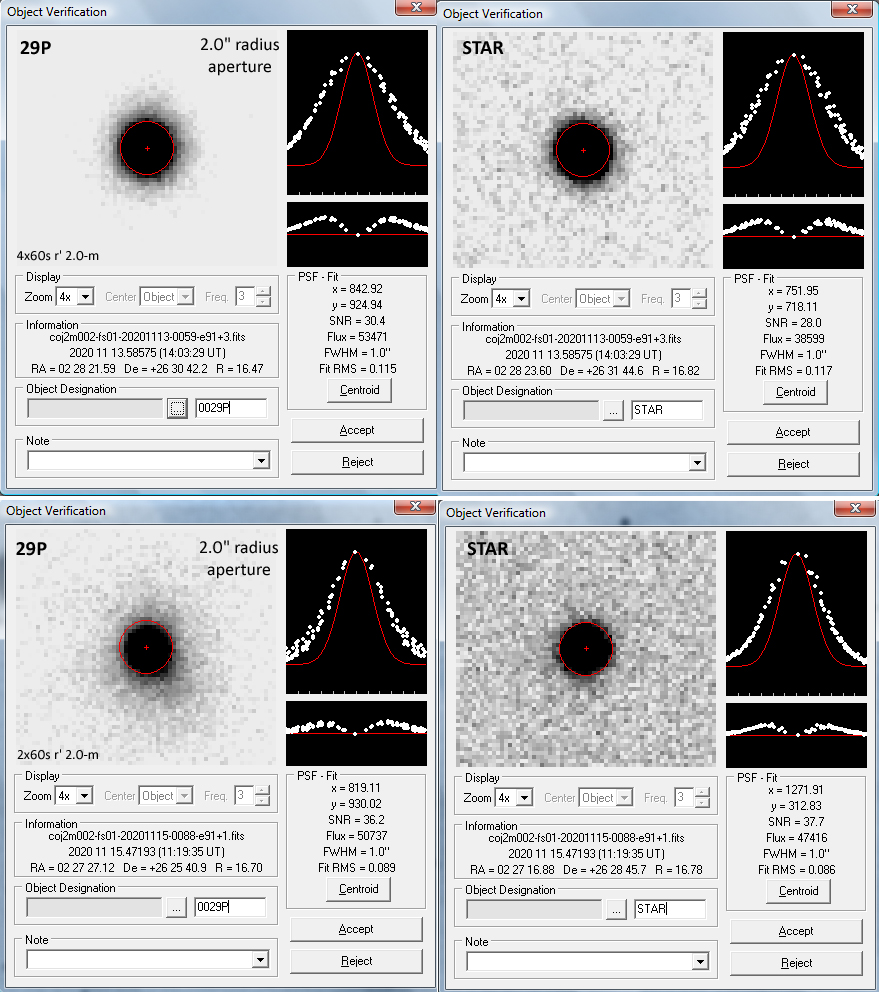This latest event measured in a 5.5" radius aperture exhibited an amplitude was just 0.22 mag (Rc). That might not sound a lot and years ago would have been totally neglected, but we have the advantage of follow-up images in good seeing with 2.0-m telescopes. I had suspected that eruptions take place on the nucleus near the limit of detection in amateur-size scopes and at the moment 29P seems to be stuck in a condition where virtually only mini-outbursts are taking place . The attached image shows 2.0-m close-ups of 29P taken 0.3 days and 2.2 days after this latest event. You can see material ejected in the direction p.a. 220° extending to 3 arcsec (11000 km). So some material is travelling at approx. 60 m/s but a large fraction is moving at <30 m/s. Photometry in apertures of two sizes, 2.0" and 5.5" radius, shows us a little what happens to the material ejected. It turns out that up to two-thirds of the ejecta disappears after 2.2 days, i.e. it falls back onto the nucleus! That is why the latest measurements are showing quite a rapid fade. The fallback of ejecta is in effect reforming its surface and it is this layer that ensures the comet maintains a strong crust. Heat absorbed in the subsurface during the very long daytime (rotation period of ~57 days) volatilises cometary ices and much of the released vapour in the subsurface recondenses in the upper crust during the very long, dark nights when the surface temperature drops to 40K or less thereby sealing the porous spaces between particles. |

Page last updated: Sun 28 Apr 10:46:44 BST 2024